September 2022
The Impact of Recovery on a Person’s Life: Lived Experience and Beyond
The Impact of Law Enforcement Programs on Individual Recovery
Reducing Harms Associated With Substance Use Disorder and Co-Occurring Mental Health Issues Through First Responder Deflection
The Story of Veterans Treatment Courts: Judge Robert Russell
Overdose Response Among the White Earth Band of Chippewa Indians
Portraits of Recovery: Doreen Schenkenberger
The Role of Specialized Case Management (SCM) in First Responder Deflection
How Court-based Recovery Support Navigators Benefit Massachusetts Communities
Incorporating Peers in First Responder Deflection
Portraits of Recovery: David Gibbs
The Role of Community Supervision in Supporting Recovery and Reentry
Connecting Harm Reduction Programming, SCM, and Peers Through First Responder Deflection
Recovery Month Related Resources
 April 5, 2022
April 5, 2022
The Americans with Disabilities Act and the Opioid Crisis: Combating Discrimination Against People in Treatment or Recovery
The guidance document explains how the ADA protects people with opioid use disorder who are in treatment or recovery from discrimination in a number of settings, including employment, healthcare and participation in state or local government services and programs. The publication is part of the Department of Justice's comprehensive response to the opioid crisis, which promotes prevention, enforcement and treatment.
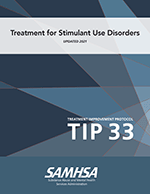 October 29, 2021
October 29, 2021
Treatment Improvement Protocol (TIP) 33: Treatment for Stimulant Use Disorders
This TIP reviews what is known about treating the medical, psychiatric, and SUD-related problems associated with the use of cocaine and methamphetamine and the misuse of prescription stimulants. It also offers recommendations on treatment approaches and maximizing treatment engagement and retention, and strategies for initiating and maintaining abstinence.
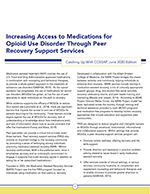 June 30, 2020
June 30, 2020
Increasing Access to Medications for Opioid Use Disorder Through Peer Recovery Support Services
This article offers an overview of medication-assisted treatment—including significant barriers that impede access to medications for opioid use disorders—and explains how peer recovery support specialists can provide a critical link to break down those barriers.
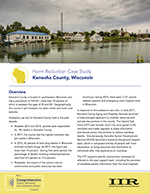 September 24, 2020
September 24, 2020
Harm Reduction Case Study: Kenosha County, Wisconsin
Kenosha County launched a three-pronged approach to mobilize resources and activate key partners in response to the substance misuse crisis. Learn about the county's efforts, partnerships, and projects that have significantly decreased overdose deaths since their launch.
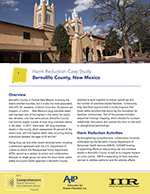 September 24, 2020
September 24, 2020
Harm Reduction Case Study: Bernalillo County, New Mexico
Public safety and public health agencies in Bernalillo County resolved to work together to reduce opioid use and overdose-related fatalities. By strengthening comprehensive, collaborative initiatives undertaken by the Bernalillo County Department of Behavioral Health Services, COSSAP funding is supporting efforts to reduce drug use and overdose deaths in Bernalillo County, as well as to mitigate impacts on crime victims. These initiatives address service accessibility gaps throughout Bernalillo County for people who have been disproportionately impacted by drug misuse, including people experiencing homelessness and urban Native Americans.
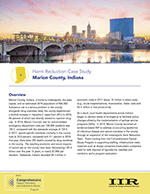 September 24, 2020
September 24, 2020
Harm Reduction Case Study: Marion County, Indiana
Marion County launched an evidence-based syringe service program to address co-occurring epidemics of infectious disease and opioid overdose. The Marion County syringe service program provides sterile injection equipment to people who use drugs, which is proven to reduce the spread of infectious disease. The program is staffed by peer recovery coaches, all of whom are individuals with the lived experience of substance use.
 August 4, 2021
August 4, 2021
Incorporating Fentanyl Test Strips In Community Substance Use Programming
This webinar focuses on the impact that fentanyl test strips can play in community substance use programming. Utilizing fentanyl test strips is a crucial next step in providing substance use education and lifesaving training to individuals in the community, especially those at high risk for overdose.
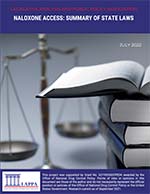 July 29, 2022
July 29, 2022
Naloxone: Summary of State Laws
The Legislative Analysis and Public Policy Association (LAPPA) has undertaken an extensive research project to determine the current status of naloxone access laws throughout the United States, including the District of Columbia and all U.S. territories. This edition of the summary has been updated to include recently enacted state laws on naloxone access as of July 2022.
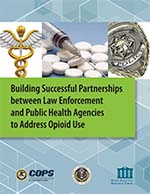 September 22, 2016
September 22, 2016
Building Successful Partnerships Between Law Enforcement and Public Health Agencies to Address Opioid Use
This report is a product of the Law Enforcement and Public Health: Successful Partnerships in Addressing Opioid Use Forum and documents the discussions that were held during the event, as well as innovative programs based on collaboration between the public health and public safety sectors. Topics covered include the establishment of treatment and prevention partnerships, the use of naloxone deployment programs, and best practices to mitigate drug use.
 March 15, 2020
March 15, 2020
Public Health and Safety Team (PHAST) Toolkit
The Public Health and Safety Team (PHAST) Toolkit is a resource developed to help local jurisdictions reduce opioid overdose deaths by increasing collaboration and coordination among all sectors, with a particular focus on public health and public safety agencies.
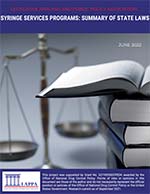 June 30, 2022
June 30, 2022
Syringe Services Programs: Summary of State Laws
Syringe services programs (SSP) are harm reduction programs that provide a wide range of services. In this summary, readers will find information with respect to SSPs for each state, including citations to applicable statutes and/or regulations, whether the state allows SSPs by statute, whether there are any municipal or county ordinances or regulations in place within the state, program components, miscellaneous provisions, and information on any pending legislation.
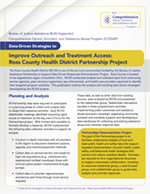 August 11, 2021
August 11, 2021
Data-Driven Strategies to Improve Outreach and Treatment Access: Ross County Health District Partnership Project
This publication outlines the analysis and resulting data-driven strategies developed by the Ross County Health District's Partnership project. The Ross County Health District (RCHD) is one of the six local communities funded by the Bureau of Justice Assistance's Partnership to Support Data-Driven Responses Demonstration Project. RCHD conducted analysis and collected input from community service agencies, peer recovery supporters, law enforcement, and health care providers to develop data-driven strategies to prevent and reduce overdose deaths.
 March 11, 2020
March 11, 2020
Plymouth County Outreach Collaboratively Addressing the Opioid Epidemic
This session explores the strategies behind Plymouth County Outreach's (PCO) successes, including decreasing both fatal and nonfatal overdoses. PCO is a referral program for those struggling to enter treatment and achieve long-term recovery. It is a collaboration of the 27 municipal police departments, a local university police department, the District Attorney’s Office, and the Plymouth County Sheriff’s Department, which engage with non-law enforcement partners in health care, treatment, recovery, local coalitions, the faith-based community, and especially the region’s hospitals.
 December 23, 2021
December 23, 2021
Reversing Opioid Overdoses with Lifesaving Naloxone
This Centers for Disease Control resource outlines what Naloxone is, how it works, how to use it, who should carry Naloxone and why, the signs of opioid overdose, and the steps to take if someone is overdosing.
 March 28, 2018
March 28, 2018
Substance Abuse and Mental Health Services Administration (SAMHSA): Overcoming Stigma, Ending Discrimination
This webcast discusses the ways that discriminatory perceptions are harmful to individuals suffering from substance use disorder.
 July 22, 2020
July 22, 2020
Building an Organizational Culture That Values First Responder Diversion
Building support for first responder diversion throughout participating agencies is critical to the implementation and success of such programs. This webinar addresses how law enforcement leaders can successfully advance change within their agencies. Whether introducing new policies, procedures, or programs, it is important to build an organizational culture where change is readily accepted.
 February 24, 2022
February 24, 2022
Case Management for First Responder Deflection
The Longmont Public Safety Department teaches how their team of community-based peer case managers are using the power of individual relationships to break down isolation, fear, and mistrust.
 August 27, 2020
August 27, 2020
Closing the Gap: A Case Study on Collaborative Work Between First Responders and Recovery Support Services
The ability to increase knowledge of community collaborations and bridge programming from first responder to treatment services is a critical piece in the continuum of care. Utilizing a case study of programming and collaborative efforts in Missouri, participants can identify gaps in service accessibility for people who use drugs, understand different levels of care for treatment and varying recovery streams based on individual need, and develop strategies to implement collaborative responses between first responders and recovery agencies in the community.
 January 27, 2022
January 27, 2022
Critical Elements for Implementing the Officer Intervention Pathway of Pre-Arrest Diversion
Across the U.S., law enforcement and other first responder agencies are collaborating with behavioral health practitioners, peers, and service providers to implement deflection and pre-arrest diversion programs to redirect individuals with substance use and mental health disorders away from the justice system and into community-based treatment and services. During this webinar, representatives from Blue Earth County, Minnesota, and Orange County, North Carolina, describe their programs and discuss critical elements needed for officer intervention programs.
 March 24, 2022
March 24, 2022
Effective Law Enforcement Strategies to Support Successful Pre-Arrest Deflection Programs
This webinar provides information on the use of innovative treatment response teams to deflect individuals with drug use and mental health disorders from entering the criminal justice system. The presenters explain why law enforcement-led pre-arrest deflection programs are essential, how to garner law enforcement agency support for deflection programs, and what makes pre-arrest deflection programs effective.
 April 23, 2020
April 23, 2020
First Responder-Led Diversion and Outreach: An Overview of the Field and a Primer for Implementation
Recognizing that law enforcement and first responders are at the front line of the opioid epidemic, a variety of multidisciplinary overdose response and early diversion models have emerged in communities throughout the nation. These models often include first responders working in partnership with behavioral health treatment providers and the peer recovery community to help overdose victims access treatment and services. This webinar provides an overview of these models and important considerations for sites that are just beginning to implement their programs.
 June 30, 2022
June 30, 2022
Fort Wayne, Indiana: A Community With HART
Since October 2019, the Fort Wayne Police Department's Hope and Recovery Team (HART) has connected with over 1,000 individuals—and 450 of those have received treatment services. Learn more about the partnership between the Fort Wayne Police Department and its embedded social workers, as well as the successes of HART.
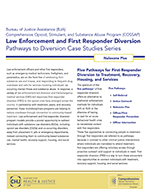 July 21, 2020
July 21, 2020
Law Enforcement and First Responder Diversion Pathways to Diversion Case Studies Series: Naloxone Plus
The Naloxone Plus pathway is centered on the connection of individuals to treatment and follow-up services after an opioid overdose. The emphasis in this pathway is on the Plus—administering naloxone or responding after an overdose plus the connection to treatment. Naloxone Plus is a national standard for law enforcement response in communities that have high rates of overdose.
 August 27, 2020
August 27, 2020
Law Enforcement and First Responder Diversion Pathways to Diversion Case Studies Series: Officer Intervention
Police officers play an important role in connecting vulnerable individuals, including those with mental health and substance use disorders, to services and resources. The Officer Intervention pathway is centered on connecting eligible individuals to treatment and services to address the underlying reason for their alleged offense while still holding them accountable for it.
 April 20, 2021
April 20, 2021
Law Enforcement and First Responder Diversion Pathways to Diversion Case Studies Series: Self-Referral Pathway
In many communities, a self-referral program is often a starting point toward the implementation of other first-responder diversion pathways. Learn about the origins of the self-referral pathway, how the pathway works, and the ten critical elements of self-referral initiatives. Also included are case studies of five sites.
 May 20, 2021
May 20, 2021
Law Enforcement-Led Diversion—Mental Health and Opioid Outreach Innovations
The purpose of this webinar is to demonstrate the significant impact first responder-led diversion can have in connecting overdose survivors and those with mental health disorders to treatment. Two successful law enforcement-led programs implemented in departments in Tennessee and North Carolina are highlighted.
 February 26, 2021
February 26, 2021
Peer Support in First Responder-led Diversion and Deflection Programs: Necessary Tools in the Fight Against COVID-19
First responder-led diversion and deflection programs that incorporate peer supports into their work have found the peer support to be an invaluable addition. These programs provide connection and hope, offering innovative approaches to saving lives. This article offers a closer look at three COSSAP sites where such valuable work is yielding positive results.
 January 27, 2021
January 27, 2021
Peer Support in Law Enforcement Diversion Programs
This webinar describes two police department diversion programs and how they integrate peer specialists; identifies changes to organizational practices and procedures necessary for the successful integration of peer work; discusses training for peer specialists and departmental staff to prepare for peer services; explores important stakeholder partnerships; and describes outcomes of programs to date.
 May 23, 2022
May 23, 2022
Considerations for First Responder Deflection in Rural Communities
This document explores challenges faced by rural jurisdictions implementing first responder deflection programs and the innovative responses that have been developed by them.
 November 30, 2020
November 30, 2020
Working with Law Enforcement in Drug Endangered Children Efforts
Law enforcement can be integral in the identification of drug endangered children and in helping to intervene in the child's and family members’ lives.
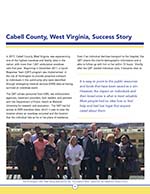 November 1, 2021
November 1, 2021
Cabell County, West Virginia, Success Story
Learn about the Quick Response Team that was implemented in December 2017 in Huntington, West Virginia, to provide proactive outreach to individuals in the community who were identified through EMS data as having survived an overdose event. A first responder deflection program was then implemented in Cabell County. Following the implementation of these programs, Cabell County EMS saw a 40 percent decrease in overdose calls between 2017 and 2018.
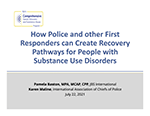 July 22, 2021
July 22, 2021
How Police and Other First Responders Can Create Recovery Pathways for People With Substance Use Disorders
This webinar explains how many people begin to misuse both legal and illegal drugs, including the impact of childhood trauma, the effects of substances on brain chemistry, how changes to brain chemistry can impact an individual’s behavior, and barriers to treatment for people with substance use disorder. The presenter demonstrates how police officers, other first responders, and medical, behavioral health, and human services professionals can contribute to and more effectively support long-term recovery and other positive outcomes for individuals affected by opioids, stimulants, and other substances.
 April 22, 2020
April 22, 2020
Peer Programming With First Responders: Front Line Collaboration
This session focuses on how supervisors and administrative team members can set a programmatic context in which both peers and first responders are encouraged to build their personal knowledge and ability to provide support that is collaborative and responsive to participant needs and identify common challenges that organizations face when providing peer support alongside first-response services. Also included are the steps necessary for building an organization’s capacity for providing peer support in collaboration with first-response services, as well as information about how Hamilton County, Indiana; Butler County, Ohio; and the Council of Southeast Pennsylvania are implementing this collaboration within their programs and organizations among justice-involved populations.
 May 13, 2021
May 13, 2021
Report of the National Survey to Assess First Responder Deflection Programs in Response to the Opioid Crisis
This report details a first-of-its-kind national, federally funded survey specific to law enforcement-led diversion and first responder deflection built on the five pathways of deflection. It is the most comprehensive overview of the field and its role in responding to the opioid crisis—as well as how first responder deflection offers alternatives to law enforcement and first responders in their work.
 March 10, 2020
March 10, 2020
Telehealth and the Opioid Epidemic in Oklahoma: Leveraging Technology to Increase Access to Information and Treatment
Telehealth technology can be successfully leveraged to provide much-needed services to rural and underserved communities. In the predominantly rural state of Oklahoma, practitioners are leveraging telehealth technology to successfully bring evidence-based practices and other vital services and supports to underserved areas. This session outlines barriers and successes encountered during the planning and implementation of these initiatives; discusses how the strategies have increased access and capacity for those in need; and covers how harnessing the power of technology has reduced transportation burdens and gaps in service.
 July 9, 2019
July 9, 2019
Peer Supports in Small Towns and Rural Communities
This session describes peer support programs in operation in micropolitan and rural communities; clarifies the roles of peers in each of these programs, as well as the impact peers are having; discusses key program partnerships; explains how these programs evaluate their work; and highlights the opportunities and challenges of operating peer programs in small towns and rural communities.
 May 29, 2019
May 29, 2019
Opioids in Appalachia
This report by the National Association of Counties and the Appalachian Regional Commission describes the impact of the opioid epidemic on Appalachian counties and offers recommendations for local action. These recommendations are discussed in five sections, each of which features key action steps and one or more case studies highlighting an Appalachian county: leadership, prevention, recovery, rehabilitation for justice-involved individuals, and economic development.
 January 23, 2019
January 23, 2019
Mobile Medication-assisted Treatment (MAT) in Practice
Employing a “whole patient” approach, MAT is an effective and nationally recognized intervention to treat opioid misuse. Research has shown that MAT significantly increases patients’ adherence to treatment, reduces illicit opioid use compared with non-drug approaches, and is more effective than either behavioral intervention or medication alone. Unfortunately, impediments (including availability and geography) can keep individuals who may benefit from MAT from accessing treatment. One way to combat these impediments is to create mobile MAT units. This webinar explores this innovative solution.
 August 20, 2020
August 20, 2020
Drug Endangered Children Alliance Development—A Successful Tribal Model
This webinar provides an overview on the Confederated Salish and Kootenai Tribes of the Flathead Reservation's journey to implement a successful Drug Endangered Children (DEC) Alliance, including the steps they took, key community stakeholders they involved to achieve success, and how they have been able to sustain their alliance.
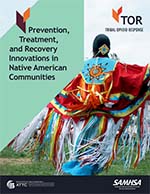 August 1, 2021
August 1, 2021
Prevention, Treatment, and Recovery Innovations in Native American Communities
This Tribal Opioid Response (TOR) Technical Assistance Center publication features stories from TOR grantees across the country sharing successes in programs by incorporating culture and traditions. Main goals of this document are to shift focus from a deficit approach to a more strengths-based comprehension of how Native communities can implement and integrate Western-based methods while maintaining their culturally informed practices.
 January 30, 2020
January 30, 2020
Rural Community Action Guide: Building Stronger, Healthy, Drug-Free Rural Communities
This resource is offered to assist rural community leaders in building an effective local response to the crisis of addiction. It provides background information, recommended action steps, and promising practices to help manage the impact of substance use disorder on local communities and help persons with the disease of addiction.
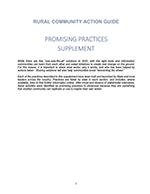 January 30, 2020
January 30, 2020
Rural Community Action Guide: Promising Practices Supplement
This companion supplement to "Rural Community Action Guide: Building Stronger, Healthy, Drug-Free Rural Communities" offers a listing of promising practices that a community can replicate or use to inspire its own action to find a solution to substance use disorder.
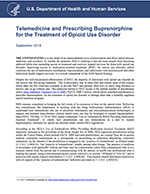 September 27, 2018
September 27, 2018
Telemedicine and Prescribing Buprenorphine for the Treatment of Opioid Use Disorder
The U.S. Department of Health and Human Services (HHS) has developed this case scenario to provide clinicians with an example of a clinical practice engagement consistent with the U.S. Drug Enforcement Administration (DEA) statement and applicable HHS-administered authorities.
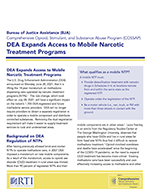 August 10, 2021
August 10, 2021
DEA Expands Access to Mobile Narcotic Treatment Programs
The U.S. Drug Enforcement Administration (DEA) announced on June 28, 2021, that it is lifting the 14-year moratorium on methadone dispensing vans operated by narcotic treatment programs (NTPs). The DEA will no longer require providers to obtain a separate registration in order to operate a mobile component and distribute controlled substances. Removing the dual-registration requirement will make it easier to supply treatment services to rural and underserved areas. Additional information is provided in this article.
 November 17, 2021
November 17, 2021
Making Connections With Individuals in Need in Rural Areas
Rural jurisdictions offer unique challenges and opportunities in addressing substance use disorder (SUD) among their residents. This video highlights innovative ways in which treatment and service providers are connecting with individuals in rural communities, including by utilizing peer support specialists to enhance community engagement, increasing transportation options, and ensuring support for families and friends of individuals with SUDs.
 July 21, 2021
July 21, 2021
Peer Recovery Support Services in Tribal Communities
This webinar explores specific models of peer recovery support services (PRSS) implementation within tribal communities; identifies benefits of PRSS, as well as common challenges and barriers; examines important considerations related to building comprehensive intervention strategies to respond to alcohol and substance misuse issues in tribal communities including PRSS; and includes a question-and-answer session with tribal PRSS practitioners.
 September 10, 2019
September 10, 2019
Peer-Based Recovery in Tribal Communities
Recovery from substance use disorders is a living reality in Native American communities across the United States. This webinar provides an overview of the recovery models and movements in Indian Country and presents three programs that use peer-based supports, tribal cultural practices, and other evidence-supported approaches to promote recovery, foster positive reentry, and enhance community resilience.
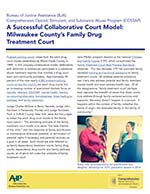 March 5, 2021
March 5, 2021
A Successful Collaborative Court Model: Milwaukee County’s Family Drug Treatment Court
This article highlights the ways that Milwaukee County’s Family Drug Treatment Court responds to the needs of participants to reach positive outcomes. In this uniquely collaborative model, defendants with addiction to substances participate in a substance misuse treatment regimen that involves a drug court team and community providers.
 August 13, 2019
August 13, 2019
Behind and Beyond the Walls: Peer Supports in Jail Settings
Peer recovery support services (PRSS) in jail settings offer a unique opportunity to address the needs of individuals with opioid use disorder while they are incarcerated and upon reentry. This webinar highlights three different models of jail-based PRSS that bridge to community peer supports. The presenters describe the structure of their programs, the roles of peers, the outcomes of their programs; and opportunities and challenges of running peer programs in jail settings.
 August 10, 2021
August 10, 2021
Financing and Sustaining Medications for Opioid Use Disorder Programs in Jails and Prisons—Lessons From the Field
Jails face challenges in financing and sustaining correctional MAT programs, including securing leadership buy-in and support, overcoming reimbursement barriers, and understanding how to effectively negotiate provider contracts. Despite these challenges, a growing number of jails have successfully implemented and sustained MAT programs by leveraging financial and non-financial resources and strategies. In this webinar, four experts from the field discuss effective ways to finance and sustain correctional MAT programs.
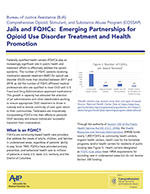 February 4, 2021
February 4, 2021
Jails and FQHCs: Emerging Partnerships for Opioid Use Disorder Treatment and Health Promotion
Federally qualified health centers (FQHCs) play a significant role in public health and treatment efforts to effectively address the opioid epidemic. This document provides an overview of FQHCs and spotlights FQHC partnerships with the King County Treatment Corrections Project in Washington State and the Hudson County Department of Corrections.
 June 23, 2021
June 23, 2021
Peer Integration Into Medication-Assisted Treatment (MAT) and Other Jail-Based Treatment Programs
To achieve positive outcomes, peer recovery support services address opioid and other substance misuse, including within jail-based treatment programs. This session describes MAT and other jail-based treatment programs and how they integrate peer specialists; identifies changes to organizational practices and procedures necessary for the successful integration of peer work; discusses training for peer specialists and departmental staff to prepare for peer services; explores important stakeholder partnerships; and describes outcomes of programs to date.
 June 3, 2020
June 3, 2020
Medication-Assisted Treatment in the Courthouse: Exploring the Success of Franklin County, Ohio
Learn how innovative efforts transformed a courthouse to better meet the needs of individuals and how collaboration among a court, service providers, a case manager, and peer support contributes to a safe and nurturing environment. The Franklin County court helps individuals on probation or who will be on probation access Naltrexone-based MAT services, peer recovery, housing, and other supports necessary for success in the community.
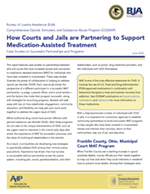 June 30, 2022
June 30, 2022
How Courts and Jails are Partnering to Support Medication-Assisted Treatment: Case Studies on Successful Partnerships and Programs
This report features case studies on partnerships between jails and courts that have increased access and connection to medication-assisted treatment (MAT) for arrested or incarcerated individuals. These case studies illustrate the power of collaboration in helping to address opioid use disorder.
 June 17, 2020
June 17, 2020
Orleans Parish Reentry Court: Connecting Individuals to Services
This webinar features the Orleans Parish Reentry Court and how it links nonviolent offenders to individualized case management, job skills, MAT paired with cognitive behavioral therapy, and comprehensive wraparound services prior to their release from prison.
 July 31, 2020
July 31, 2020
Orleans Parish Reentry Court: Persistence, Peers, and Possibilities
The Orleans Parish Reentry Court Program (ORCP) facilitates life-changing opportunities for incoming inmates to the Louisiana State Penitentiary at Angola. ORCP emerged from a desire to equip inmates with vocational, educational, and other skills that could lead to gainful employment, thereby reducing the likelihood of recidivism.
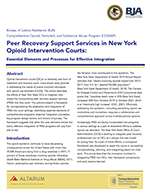 April 5, 2022
April 5, 2022
Peer Recovery Support Services in New York Opioid Intervention Courts: Essential Elements and Processes for Effective Integration
Opioid intervention courts (OICs)—a relatively new form of treatment and recovery court—have shown early promise in addressing the needs of justice-involved individuals with opioid use disorders. This article describes the efforts of New York State OICs to heighten their impact by incorporating peer recovery support services (PRSS) into their work. The authors present a framework for conceptualizing the adaptation and integration of PRSS into court settings.
 May 21, 2019
May 21, 2019
Peer Support in Drug Courts
 October 1, 2018
October 1, 2018
Jail-Based Medication-Assisted Treatment: Promising Practices, Guidelines, and Resources for the Field
This resource, developed to support jail administrators in providing effective treatment for opioid misuse and helping to halt the opioid epidemic in the United States, introduces what has been learned from sheriffs’ and jail administrators’ innovative use of medication-assisted treatment, a cornerstone of best practice for recovery from substance abuse; describes the essential components of these programs; and discusses the latest research on how the programs are best implemented.
 June 29, 2021
June 29, 2021
South Correctional Entity "SCORE" Whole-Person Care
This webinar features the MAT program at South Correctional Entity (SCORE) in Des Moines, Washington. Learn how SCORE transformed its services to better meet the needs of individuals, and how services such as telehealth, peer recovery specialists, linkages to reentry services, and addressing co-occurring disorders are of benefit to individuals.
 April 28, 2021
April 28, 2021
Integrating Peer Supports in Treatment and Recovery Courts
To achieve positive outcomes, peer recovery support services (PRSS) to address opioid and other substance misuse are increasingly offered across diverse criminal justice settings, including within treatment and recovery court programs. This webinar provides information on diverse treatment and recovery court programs and how they integrate peer specialists.
 February 8, 2022
February 8, 2022
Managing Substance Withdrawal in Jails: A Legal Brief
This Bureau of Justice Assistance (BJA) release describes the scope of the challenge of managing substance withdrawal in jails. In addition, it provides an overview of key legislation and significant court cases related to substance withdrawal and outlines steps for creating a comprehensive response for individuals with substance use disorders.
 May 12, 2022
May 12, 2022
Peer Recovery Support Services in Correctional Settings
The purpose of this publication is to assist organizations in a thoughtful, deliberate approach to successfully integrate peer recovery support services (PRSS). It defines peer support in correctional settings; describes the core competencies for peer support in correctional settings; highlights the use of peer support in short-term, medium-term, long-term, and community corrections settings to improve recovery and reentry outcomes; identifies emerging and best practices for integrating peer support into correctional settings; and provides recommendations for program design and implementation.
 June 24, 2020
June 24, 2020
Peer Support in Jails and Prisons: Enhancing Therapeutic Communities and Residential Substance Abuse Treatment Programs
This webinar covers the value of peer support for incarcerated individuals and the importance of therapeutic communities for those individuals.
 June 22, 2022
June 22, 2022
Best Practices in Implementing Peer Recovery Support Services in Hospital Settings
This session will explore the implementation of peer supports within two hospital settings from both an individual hospital and hospital network perspective.
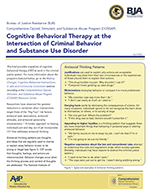 April 18, 2022
April 18, 2022
Cognitive Behavioral Therapy at the Intersection of Criminal Behavior and Substance Use Disorder
This brief provides snapshots of cognitive behavioral therapy at work in the criminal justice system, highlighting programs at the Franklin County, Massachusetts, Jail; the Franklin County, Massachusetts, Sheriff's Office; and Washington County, Minnesota, Community Corrections.
 November 16, 2021
November 16, 2021
Getting Started: Best Practices and Common Challenges for New Peer Recovery Support Services Programming
This session explores best practices and common challenges for organizations that are newly implementing peer recovery support programming by exploring methods of bridging the link to connect people to trustworthy community resources, highlighting tips for establishing a valid program through identifying and building stakeholder relationships, discussing the movement toward a “connection” model and away from an “enforcement” model of recovery, and identifying steps for establishing an evidence base to secure and maintain programmatic funding.
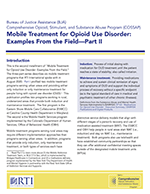 August 18, 2021
August 18, 2021
Mobile Treatment for Opioid Use Disorder: Examples From the Field—Part II
This publication profiles two programs working in rural, underserved areas that provide both induction and maintenance treatment. The first program is the Eastern Shore Mobile Care Collaborative at Caroline County Health Department in Maryland. The second is the Mobile Health Services program implemented by the Colorado Department of Human Services, Office of Behavioral Health.
 November 18, 2021
November 18, 2021
Peer Recovery Support Services in Practice: Tailoring Peer Support to Unique Practice Settings
This session explores the Tucson, Arizona, Police Department’s lessons learned in regard to tailoring peer recovery support services to a law enforcement setting; identifies challenges and opportunities associated with maintaining outside partnerships with community stakeholders; highlights tips for establishing internal, external, and peer buy-in; discusses issues surrounding peer supervision and overcoming disparities around dual role expectations; and describes hiring practices for peers, as well as training practices for peers and other internal staff.
 November 17, 2021
November 17, 2021
Peer Recovery Support Services in Times of COVID: Challenges and Innovations
This session explores the challenges faced and innovations developed by two peer recovery support services (PRSS) programs as they have pivoted peer programming throughout the unprecedented time of the pandemic through examining the impact of the COVID-19 pandemic on PRSS; highlighting methods for identifying and securing blended funding opportunities when financial resources are limited; discussing best practices for ensuring a successful transition to telehealth and/or hybrid service models; exploring effective supervision practices to combat pandemic fatigue; and identifying ways to continue building a peer-/recovery-oriented culture during times of collective stress within the community.
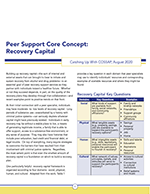 August 31, 2020
August 31, 2020
Peer Support Core Concept: Recovery Capital
Building up recovery capital—the sum of internal and external assets that can initiate and sustain recovery—is an essential goal of peer recovery support services in supporting individuals on their paths toward healthier lives. This article covers recent work by peer specialists, including recovery capital strategies developed by COSSAP grantees.
 March 25, 2020
March 25, 2020
Peer Support in African American Communities
As peer practitioners move into a variety of roles in the criminal justice system, programs need to be mindful and knowledgeable about how to effectively provide peer support to minority and underserved populations—and ensure cultural responsiveness on individual, programmatic, and organizational levels. This session focuses on how supervisors and administrative staff members can set a context in which peers are encouraged to build their personal knowledge, response, and cultural awareness about providing peer support to African American clients. It also identifies common challenges organizations face when providing peer support for underserved populations.
 September 23, 2020
September 23, 2020
Recovery Planning
This session for peer workers and peer program supervisors explores recovery planning as a strengths-based, self-directed process. It also defines recovery capital, identifies its significance to sustained recovery, and identifies goal-setting tools to use while supporting people in recovery in varied contexts.
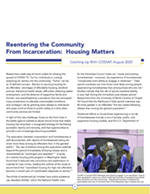 August 31, 2020
August 31, 2020
Reentering the Community From Incarceration: Housing Matters
Those on the front lines in the battle against substance misuse know that opportunities for stable housing—a long-recognized strategy for facilitating successful reentry—are increasingly becoming available. This article addresses the housing issue, including spotlights on the work of COSSAP grantees in Franklin County, Ohio, and Palm Beach County, Florida.
 November 16, 2021
November 16, 2021
Reentry and Continuing Care: Building Networks of Community Support—Residential Substance Abuse Treatment (RSAT) Presentation
The importance of continuing care for individuals released from prison and jail cannot be overstated. Upon completion of this session, participants will be able to list at least three reasons why reentry and continuing aftercare services upon release are vital to the health of the reentering individual and the community; describe how reentry needs can be planned for, and met, prior to release; and name at least two potential collaborative partners within their community/region that could expand aftercare support for people released from the local jail and/or prison within their community/region.
 June 9, 2022
June 9, 2022
Reentry Resource Centers: Supporting Recovery, Shaping the Continuum of Care
During this webinar, representatives from two counties—Bernalillo County, New Mexico, and Franklin County, Ohio—will discuss their reentry resource centers, including how they have been set up and maintained, what needs are most requested and addressed, how connections are made to continue treatment, and challenges they have had to overcome. Speakers will explore how data and best practices have improved their centers and what changes they plan to make in the future.
 July 29, 2022
July 29, 2022
Recovery Residences Fact Sheet
Recovery residences provide a sober, safe, and healthy living environment that promotes recovery from alcohol and other drug use and associated problems. These residences are commonly referred to by a number of names, including sober living houses, sober living environments, and recovery homes, and their primary purpose is to provide a home-like environment for individuals in recovery from substance use disorder to help sustain that recovery. This document includes information on the history of recovery residences, types of recovery residences, and the success of and issues faced by recovery residences.
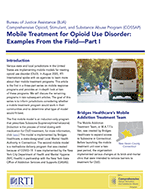 February 3, 2021
February 3, 2021
Mobile Treatment for Opioid Use Disorder: Examples From the Field—Part I
The goal of this document is to inform jurisdictions considering whether a mobile treatment program would work in their communities and to determine what type of model would fit best. The two mobile models featured in this article are an induction-only program that prescribes Suboxone (buprenorphine/naloxone) and a methadone delivery program that was created because of the COVID-19 public health emergency.
 April 5, 2021
April 5, 2021
Peer Recovery Support Services and Supporting Fathers in Recovery
Peer recovery support services provide individuals living with substance use disorder (SUD) with emotional, informational, and social support for their health, wellness, and recovery. The Strong Dads Make Strong Kids program in Barton County, Kansas, was developed to provide peer recovery and social support specifically to fathers entering their recovery journey. During this webinar, attendees learn how to create similar programs in their communities and obtain training materials for participants in the initiative. Graduates of the program will provide testimonials of the impact the Strong Dads Make Strong Kids program has had on their lives.
 October 12, 2020
October 12, 2020
Pennsylvania Recovery Organizations - Achieving Community Together (PRO-ACT): Virtual Site Visit to Peer Support Programs in Southeast Pennsylvania
The Council of Southeast Pennsylvania (The Council) is a private non-profit prevention, education, advocacy, assessment, intervention, and recovery support organization, serving the counties of Bucks, Chester, Delaware, Montgomery, and Philadelphia. Through its Pennsylvania Recovery Organizations - Achieving Community Together (PRO-ACT) initiative, The Council amplifies the power of lived experience of recovery from addiction and criminal justice involvement. PRO-ACT-certified recovery specialists are trained in recovery and have lived experience, enabling them to provide persons in recovery with treatment options, resources, and hope.
 October 14, 2021
October 14, 2021
Supporting Continuity of Care Throughout Justice Involvement: Effective and Safe Transitions to Community-based Treatment
This webinar presents programs and processes that jails should have in place to ensure that people transitioning from incarceration to the community are able to access and/or continue substance use treatment, link with peer support or other social supports, and connect with resources that enable them to make progress toward safe and stable housing.




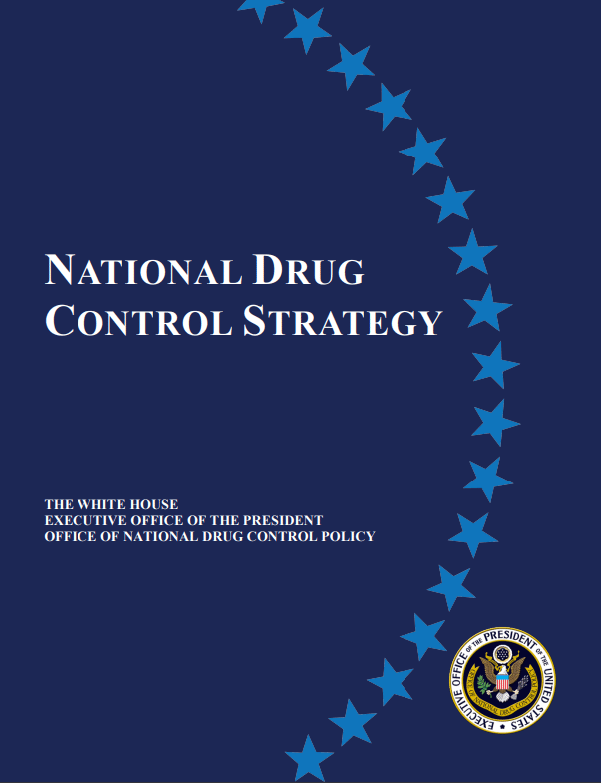

 Principal Deputy Assistant Attorney General Amy L. Solomons Opening Remarks for Recovery Month
Principal Deputy Assistant Attorney General Amy L. Solomons Opening Remarks for Recovery Month
 Thursdays Champion of Recovery
Thursdays Champion of Recovery
 The Impact of Recovery on a Person’s Life: Lived Experience and Beyond
The Impact of Recovery on a Person’s Life: Lived Experience and Beyond
 Implementing Peer Recovery Support Services in the Community
Implementing Peer Recovery Support Services in the Community
 Spreading the Word Through the Bureau of Justice Assistance’s Jail-based Mentor Site Initiative
Spreading the Word Through the Bureau of Justice Assistance’s Jail-based Mentor Site Initiative
